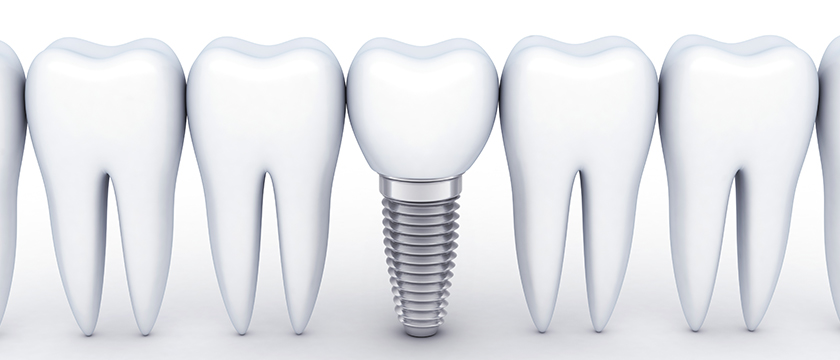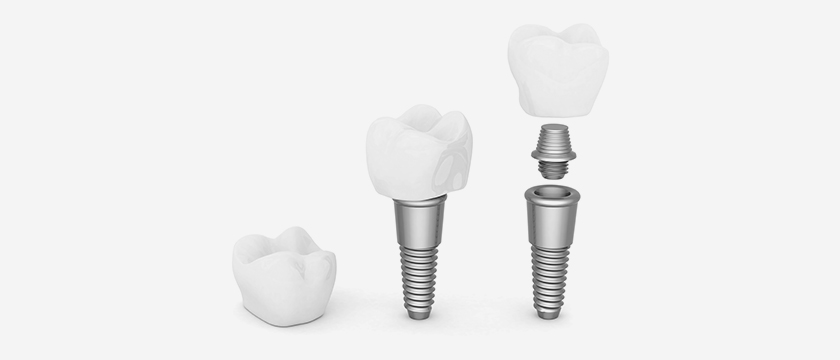Some patients need a bone graft for dental implant when their jaw bone isn’t thick enough to support this kind of tooth replacement. Thanks to advances in modern dentistry, bone grafting can be done quite quickly and patients have a few different options before they have their dental implants placed. One of those options is digital dental implants, which does not always require a bone graft for osseo-integration. Let’s take a closer look.
Why You Need A Bone Graft For Dental Implant
In a traditional dental implant procedure a patient needs to have a certain amount of jaw bone thickness. This is because a dental implant needs to withstand the same biting and chewing force as your natural teeth – and it therefore needs a very solid foundation in order to support it.
When a patient has been missing a tooth for some time, natural bone loss will occur, because there are no tooth roots stimulating the jaw. Your dentist may recommend a bone graft, so that the bone in your jaw can be stimulated to grow back. Sometimes just a minor bone graft is required. This usually occurs in cases where there is some bone but not enough to cover the sides of your replacement tooth. Often in these cases, the bone graft can be done as the same sitting as the placement of the dental implant.
If there isn’t enough bone to place the dental implants, your dental practitioner will need to book a separate sitting for the bone graft procedure. This means that you will also need to undergo a few months of healing before your dental implant can be placed.
Types Of Bone Grafts for Dental Implants
As we mentioned above, by today’s standards there are a number of different options available. In many cases your dental practitioner will try to use bone grafted from another place on your own body (known as an autogenous bone graft), but when this is not possible there are other options available including
Allogenic bone grafts
Allogenic bone is taken from a cadaver and processed in a freeze-dry method.
Xenogenic bone grafts
Xenogenic bone grafting is done by taking bone material from another creature – in most cases this is usually a cow. This material does need to undergo rigorous processing because it has been taken from another species and thus its chances of rejection are higher than using autogenous material.
Some dental practitioners use substitutes for bone grafts, which are also considered safe and effective.
Sometimes, a patient needs a dental implant in the upper jaw, and this would not be possible because the sinus cavity is too close.
In these cases a sinus lift would need to be performed to make enough bone available in the upper jaw.

What Can You Expect From The Bone Graft Procedure?
You will begin your bone graft journey with a consultation with your dental practitioner. Your dentist will consider whether your jaw is thick enough, wide enough and deep enough to support your dental implant. Having a bone graft procedure prior to dental implant surgery can ensure a more successful outcome. Your dentist will use 3D scans, x rays and digital photographs to evaluate your bone density.
Once this evaluation is complete, your dentist will present you with a treatment plan, highlighting his recommendations for your required bone graft, as well as the steps that need to be followed afterwards for the successful placement of your dental implants.
If the tooth to be replaced is still in your mouth, it will be extracted first. Depending on the amount of jaw you have, a bone graft could be done at this stage, and allowed to heal before moving on. The bone that is transplanted into your dental implant site must stimulate the growth of new bone in order to thicken and strengthen your jaw.
When your jaw bone has healed and the site is ready for the implant, it will be placed in a separate surgery. A waiting period of around three months usually follows the placement of your dental implant, because it needs to osseo-integrate with your jaw.
When this integration has taken place, your dentist will attach the posts or abutments. This requires re-opening the surgical site, and also requires a healing period afterwards.
Once this period of healing is complete your dentist will place your permanent teeth – and if you were wearing temporary crowns, they will be replaced.
Do I Need A Bone Graft?
Remember that not everyone who needs dental implants has to undergo a bone graft. Even if you have been missing teeth for some time, it’s possible you won’t need one, or that a minor bone graft can help to provide the foundation for your dental implants.
If you need a full mouth replacement and opt for all-on-4 dental treatment, there is also a chance you may not need a bone graft, as these implants are placed at 45 degree angles, giving them a strong anchor point in your jaw.
For some patients bone grafting is the deciding factor between dental implants and other tooth replacements like dentures.
To find out more about whether you need a bone graft for dental implant, or any part of the dental implant process please get in touch with us:
Sydney CBD: (02) 8294 5812
Gosford: (02) 8294 8656






